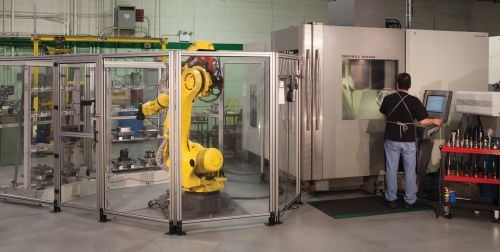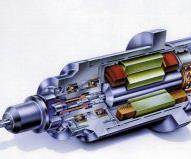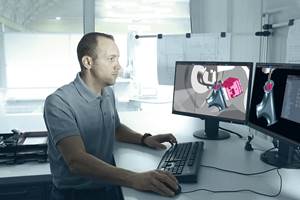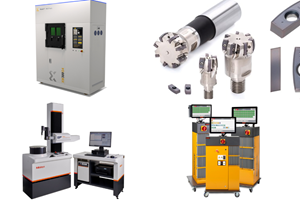From Craft to Science
For this shop, efforts to adapt to technology that reduces the need for human labor have driven a fundamental and ongoing shift to a more standardized manufacturing process.
Some things never change. When MoldMaking Technology profiled Graphic Tool in 2003, company President Rich Burman cited increasing throughput without increasing labor as a chief goal. From high-speed mills and EDMs with automatic tool and electrode changers to the company’s first-ever robotic system, the machinery on the shop floor at that time provided ample evidence of a commitment to doing just that. More recent investments in technology that speeds part processing and takes tedious tasks out of operators’ hands show that the Chicago-area plastic injection mold manufacturer continues to pursue this goal just as earnestly today.
In fact, the 30-employee, 17,500-square-foot shop is now running more work lights-out, achieving tighter tolerances, and meeting more stringent delivery schedules than ever before, Burman says. However, getting there took far more than just adding equipment. Making the most of raw technological improvements also required a fundamental shift in
the company’s approach to manufacturing.
When the 2003 article was published, no one had fully recognized that the shop had already embarked on this journey. Today, however, Burman can draw a sharp contrast with the way things used to be. As opposed to shouldering the lion’s share of responsibility for taking a job from concept to completion, project leaders now work much more collaboratively with the rest of the team. And although the staff’s knowledge and expertise are just as important as ever, the sophisticated equipment on the shop floor facilitates a less hands-on approach and a greater focus on the big picture. Perhaps most importantly, standardized procedures minimize lead time and ensure consistent quality from job to job. As plant manager Don Smith puts it, “The people do not drive the processes; the processes drive the people.”
Growing Pains
Graphic Tool’s efforts to do more with less have always been driven by the usual suspects: low-cost overseas competition, a shortage of skilled workers, increasingly demanding delivery schedules and the volatile nature of the industry. In the early 2000s, however, the shop found additional motivation in the form of a new segment of customers. Recognizing the difficulties that high-cavitation molds would pose for offshore suppliers, management began pursuing this work in earnest. Today, high-cavitation jobs constitute more than 60 percent of the shop’s business, but getting there required negotiating a steep learning curve, Burman says. This work is characterized by parts with hundreds of cavities in some cases, complex geometries, tolerances as tight as ±0.0001 inch to ensure interchangeability with spare parts, and the need for inspection at every stage of the process.
By pulling company-wide inefficiencies into sharp focus, such challenges accelerated the shop’s transition to a more standardized approach, Burman says. Previously, this change had been driven solely by technology. Producing electrodes in a robotic cell, for example, required mounting every blank in the same orientation on identical, palletized fixture plates, as shown on the cover of this issue. That trend would continue, as evidenced by the shop’s investments in a robot-tended five-axis machining center and, most recently, two pallet-fed HMCs. Just as important, however, was a growing recognition that reducing variation beyond individual workstations would require letting go of some closely held notions about how to take a job from print to part.
Surrendering to the Process
Chief among those notions was the proper role of people on the shop floor, whether experienced machinists or fresh trainees. Toward the upper end of that spectrum are the six project leaders who supervise all aspects of production on any given job. A decade ago, these knowledgeable toolmakers would have been responsible for working out the intricacies of every step in the process, from design alterations to specific fixturing and machining strategies. In many cases, they’d personally handle much of the legwork of running and programming equipment.
Today, of course, much of the heavy lifting is done by the technology itself. Beyond that, Smith says it’s no longer practical to expect a single person, no matter how experienced, to master the intricacies of all the technology in the shop. For instance, learning enough to make the most of simultaneous five-axis machining capability can be a full-time job for even the most seasoned industry veteran.
Finally, the previous, hands-on approach led to variations in how different project leaders might approach the same work—variations that could become sources of inefficiency. Surrendering some measure of control to pre-planned processes and best practices can be difficult for toolmakers who pride themselves on problem-solving, but Smith says their willingness to do so has been critical to the shop’s ability to meet delivery targets extending only three weeks out in some cases.
That’s not to say project leaders’ skills are any less valuable than before. They’ve just been reapplied. Today, they act more as overseers, focusing mostly on ensuring production proceeds according to plan. Critically, that’s no longer a subjective valuation because every step in processing a given job is worked out well in advance at a meeting with the heads of each individual department (CNC machining, programming, etc.). Smith reports this collaborative approach ensures everyone is operating from the same set of instructions. It also ensures that the overall process fully accounts for the current needs and scheduling constraints of different areas in the shop.
Just as importantly, he adds, letting each department “own” its particular portion of a given job supplements project leaders’ broader expertise with the specialized knowledge that comes only from working with the same equipment day in and day out. For example, the machinists who run the five-axis equipment are in a better position than anyone to determine whether extra stock on a particular area of a workpiece will help consolidate setups or whether a certain cutting strategy might eliminate the need for downstream deburring. In essence, the shop relies on those closest to the work to determine the most efficient way to perform any given task, and these best practices can then be repeated on every job. “We’re continuously developing a library of information on how to do different things that we can return to again and again,” Smith says.
The shop’s new approach also extends to those occupying the lowest rung of the proverbial employment ladder. In the “old days,” Burman says, a trainee would have shadowed a more experienced toolmaker to learn the general skills of the trade. In contrast, today’s new hires focus on specific equipment in specific areas of the shop. For example, Mike Glisson is currently focusing solely on learning the ropes of electrode production on the machining cell on the cover of this magazine, which consists of a Makino V33i high-speed machining center with a fourth-axis rotary table and a 180-station robotic carousel from Erowa. Most of the knowledge he’s soaking in relates best practices developed over time by the previous regular cell operator, Jon Olsen (pictured on the cover), who is transitioning to programming now that he’s become a veritable expert in that specific area. “First, as a team, we create a process, then we train our people according to that process,” Smith explains. “We’re taking the variable of the individual out of the equation.”
Related Content
Advancing Moldmaking and Plastics: Trends in 3D Printing, Automation and Sustainability
NPE 2024 showcased the latest trends and technologies in innovation, efficiency and sustainability for moldmakers and molders, featuring advancements in 3D printing, automation, design and virtual reality/augmented reality/artificial intelligence.
Read MoreDevelopments in High-Speed Machining Technology
There have been many exciting developments in high-speed machining relative to machining centers and controls, tooling and CAD/CAM systems.
Read MoreHow to Automate Process and Design
Moldmakers can improve their operations and stop wasting time by taking these six steps for process and design automation.
Read MoreProducts and Services for Multiple Moldmaking Needs
New year, new technology roundup! Featured here is a collection of product offerings, from profile milling cutters to industry-specific CAD/CAM software to innovative hot work tool steels.
Read MoreRead Next
How to Use Continuing Education to Remain Competitive in Moldmaking
Continued training helps moldmakers make tooling decisions and properly use the latest cutting tool to efficiently machine high-quality molds.
Read MoreAre You a Moldmaker Considering 3D Printing? Consider the 3D Printing Workshop at NPE2024
Presentations will cover 3D printing for mold tooling, material innovation, product development, bridge production and full-scale, high-volume additive manufacturing.
Read MoreHow to Use Strategic Planning Tools, Data to Manage the Human Side of Business
Q&A with Marion Wells, MMT EAB member and founder of Human Asset Management.
Read More
























